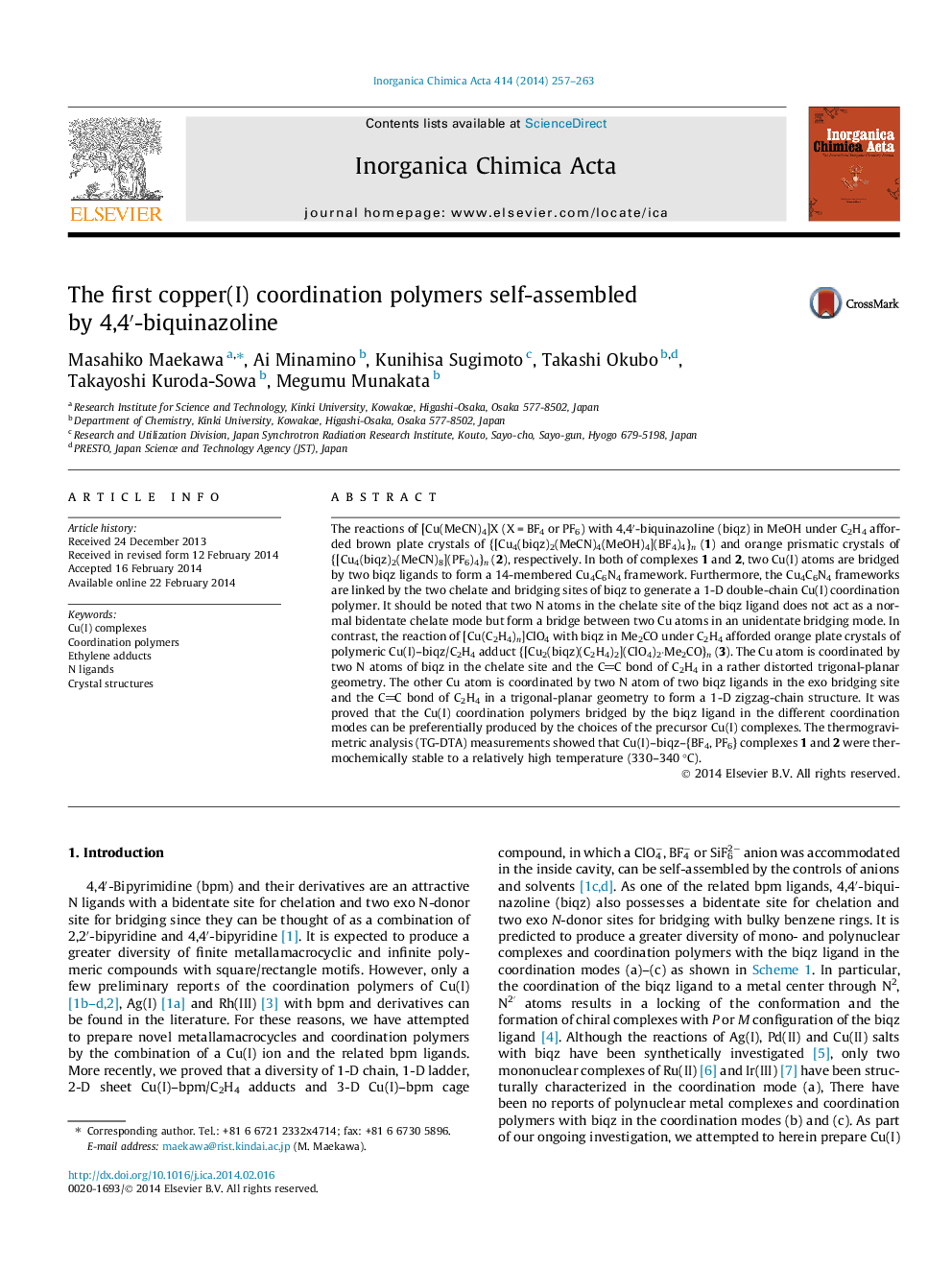| Article ID | Journal | Published Year | Pages | File Type |
|---|---|---|---|---|
| 1305691 | Inorganica Chimica Acta | 2014 | 7 Pages |
•1-D double-chain copper(I) coordination polymers self-assembled by 4,4′-biquinazoline.•1-D zigzag-chain copper(I) C2H4 adducts self-assembled by 4,4′-biquinazoline.•Diverse coordination modes of 4,4′-biquinazoline.
The reactions of [Cu(MeCN)4]X (X = BF4 or PF6) with 4,4′-biquinazoline (biqz) in MeOH under C2H4 afforded brown plate crystals of {[Cu4(biqz)2(MeCN)4(MeOH)4](BF4)4}n (1) and orange prismatic crystals of {[Cu4(biqz)2(MeCN)8](PF6)4}n (2), respectively. In both of complexes 1 and 2, two Cu(I) atoms are bridged by two biqz ligands to form a 14-membered Cu4C6N4 framework. Furthermore, the Cu4C6N4 frameworks are linked by the two chelate and bridging sites of biqz to generate a 1-D double-chain Cu(I) coordination polymer. It should be noted that two N atoms in the chelate site of the biqz ligand does not act as a normal bidentate chelate mode but form a bridge between two Cu atoms in an unidentate bridging mode. In contrast, the reaction of [Cu(C2H4)n]ClO4 with biqz in Me2CO under C2H4 afforded orange plate crystals of polymeric Cu(I)–biqz/C2H4 adduct {[Cu2(biqz)(C2H4)2](ClO4)2·Me2CO}n (3). The Cu atom is coordinated by two N atoms of biqz in the chelate site and the CC bond of C2H4 in a rather distorted trigonal-planar geometry. The other Cu atom is coordinated by two N atom of two biqz ligands in the exo bridging site and the CC bond of C2H4 in a trigonal-planar geometry to form a 1-D zigzag-chain structure. It was proved that the Cu(I) coordination polymers bridged by the biqz ligand in the different coordination modes can be preferentially produced by the choices of the precursor Cu(I) complexes. The thermogravimetric analysis (TG-DTA) measurements showed that Cu(I)–biqz–{BF4, PF6} complexes 1 and 2 were thermochemically stable to a relatively high temperature (330–340 °C).
Graphical abstractThree novel Cu(I) coordination polymers with 4,4′-biquinazoline were self-assembled and they have been characterized by IR, X-ray, and thermogravimetric analyses.Figure optionsDownload full-size imageDownload as PowerPoint slide
